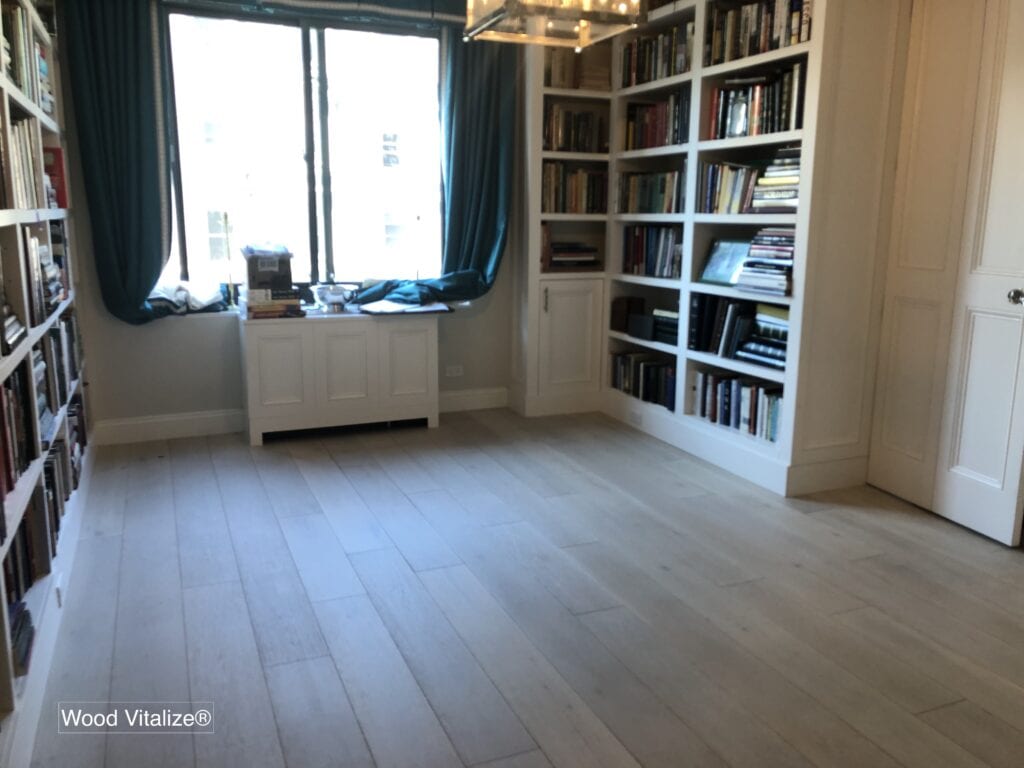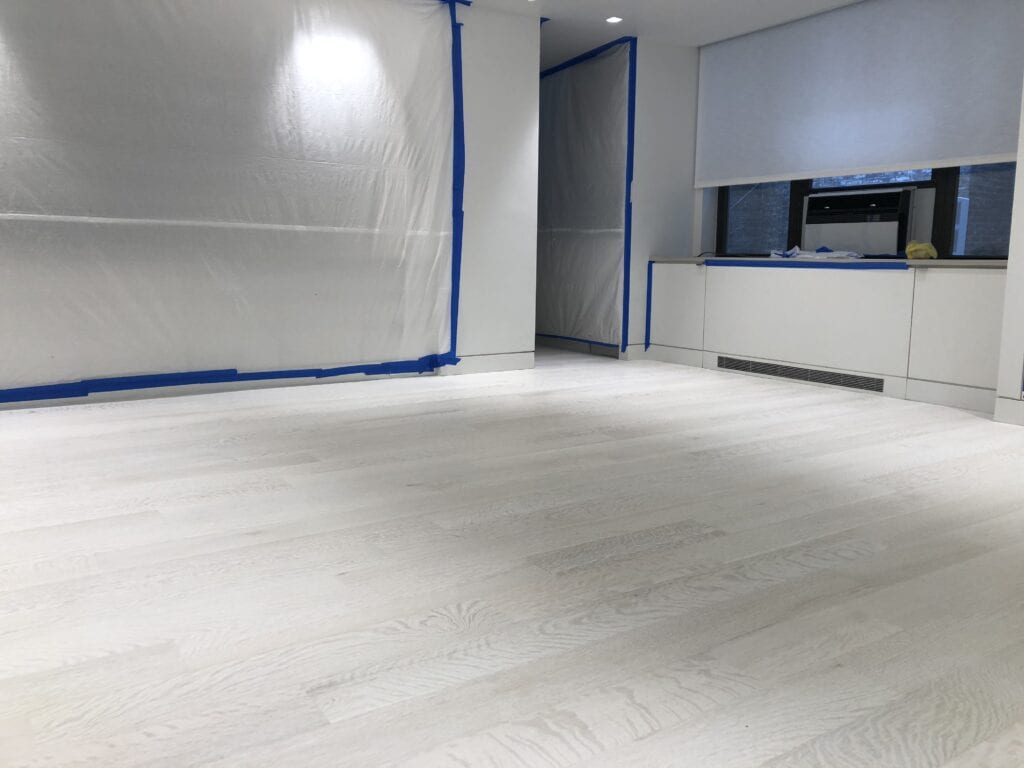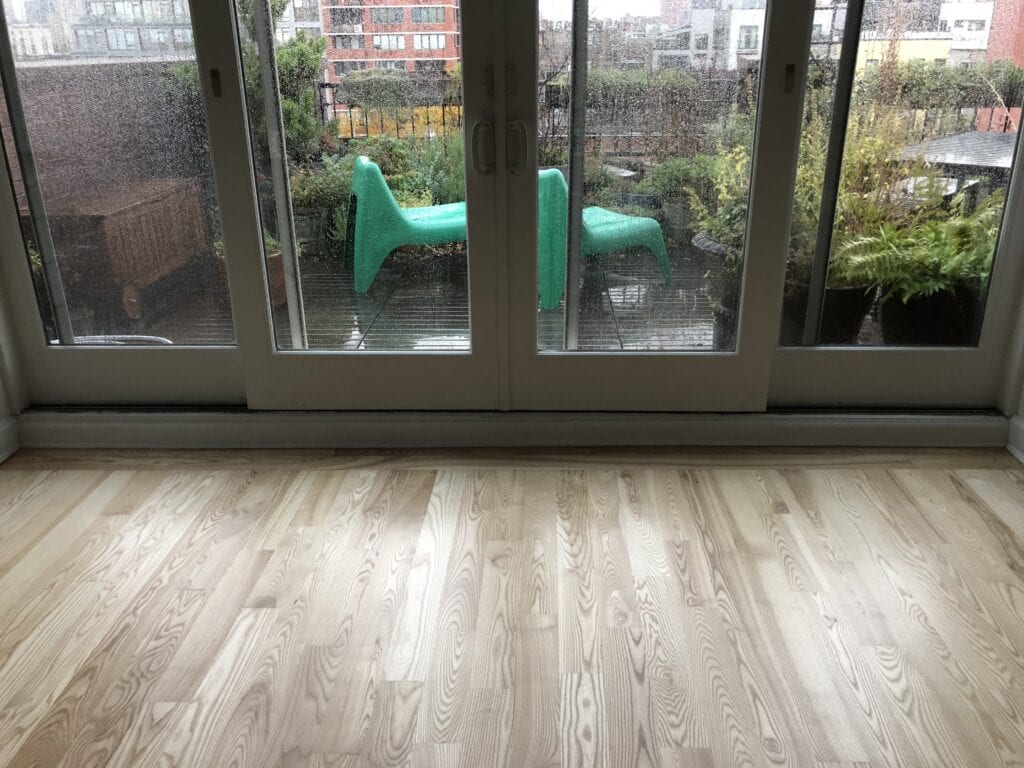Whitewash, Bleached, Or Natural Wood Floor Refinishing?
People often have difficulty understanding whitewashed, bleached, or natural wood floor refinishing. There are straightforward differences between all of these methods. Each method has a distinct color.
First, whitewash is a popular phrase. Often, used to describe white stain application. The term’s “whitewashed” and “pickled” describe basic white wood floor stain. Both terms mean the same thing. Most importantly, white stain or whitewash will seep into the wood. After floor sanding, the white stain will lighten the wood but will not hide the brown of the wood completely. You will still see a light brown intermixed with white stain. Bona Nordic Sealer will give you a slightly lighter look than the whitewash. But, it will not make the floors white like bleaching. Below is a picture of whitewash.

Secondly, bleached wood floors have become common. Bleached floors will completely take out the color. This method will truly make your floors white. For example, all of the brown will come out as opposed to whitewash. This method works best on white oak floors. Furthermore, using this method on red oak and exotics can cause discoloring. Red oaks remain a light pink and exotics can distort.

Lastly, natural wood floor refinishing is the most common practice. This method has become very popular because of today’s “natural” style. The tech sands the floors down, apply clear sealer, and applies 3 layers of natural polyurethane. Overall, this method will show the wood floors in it’s natural state.

